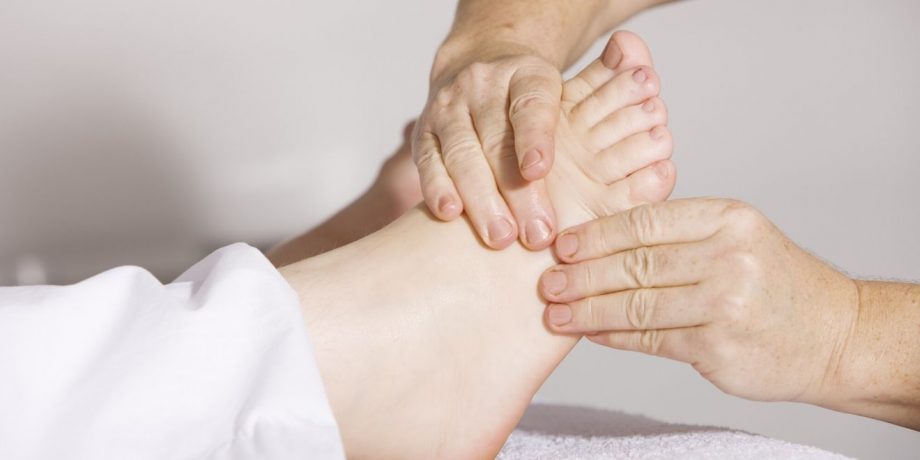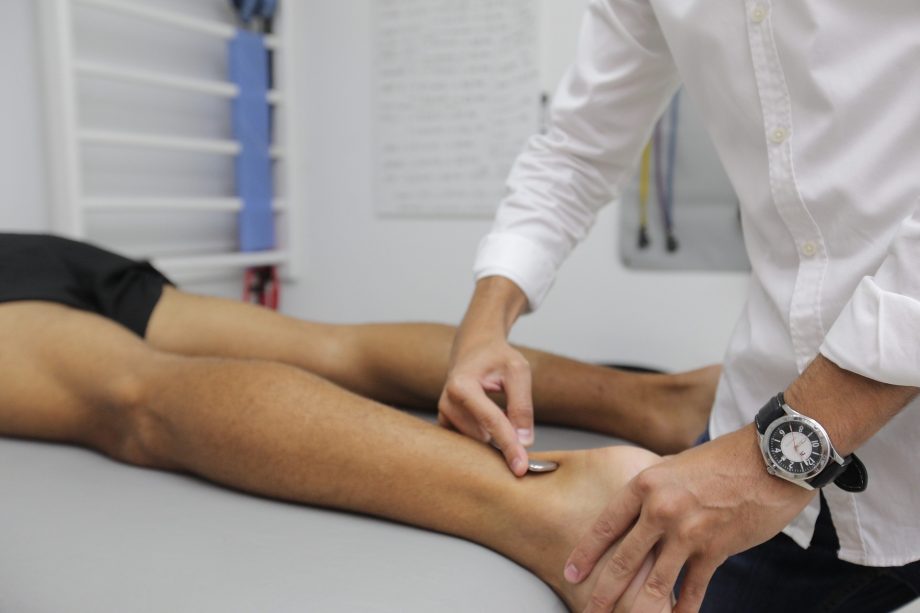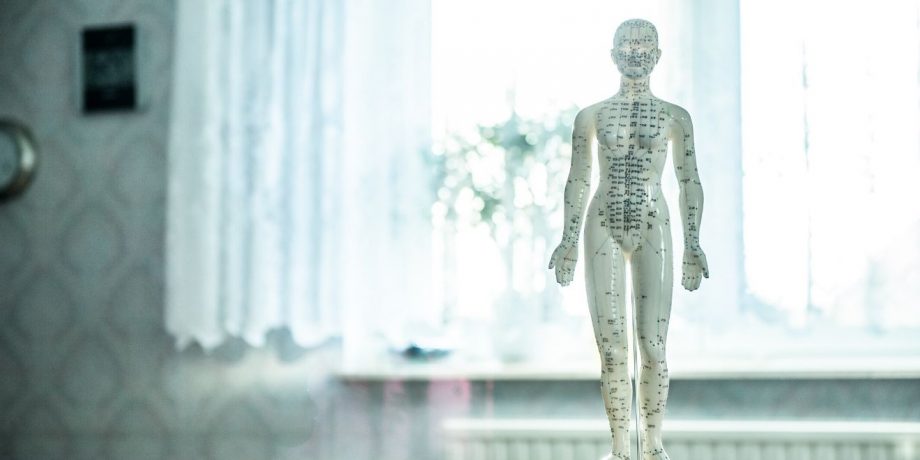How is physical therapy different from chiropractic treatment?

Physical therapy and chiropractic treatment
have similarities to the extent that both focus on the healing powers of the body to treat various conditions of pain and provide pain relief.
Although both methods use physical means for treating pain, the approach and the techniques are quite different, which is why it might often happen that both methods of treatment can supplement one another by working alongside. To ensure a positive outcome for clients, both treatment methods offer unique perspectives in pain management that can result in long term eradication of pain.
Physical therapy can sometimes allow patients to continue with medications, whether traditional or alternative medicines, but chiropractic treatment is wholly physical and does not require any medications whatsoever.

By understanding how physical therapy differs from chiropractic treatment, it will be easier to decide what would be good for you.
Chiropractors believe in the power of the spine as the source of good health, and since the spine undergoes deformities for various reasons, it causes joint pain as well as headaches and migraines. Chiropractors perform adjustments or manipulation of the spine and joints by using their hands only to realign the spine and address subluxations, which is a condition indicative of dislocation of joint. Chiropractors use an X-ray to establish that subluxations exist and then perform manual adjustments to address it. The patient must go through several sessions of adjustment for a few weeks or months until the pain goes away, and there is an improvement in mobility too. The treatment technique is entirely physical, and chiropractors do not use any machines, instruments or devices during the treatment.
The focus of physical therapists is to cure pain through exercises and consists of conducting a physical examination of the patient first without any imaging like X-ray to evaluate the condition and diagnose the cause of pain to work out an individualized treatment plan. The treatment plan focuses on the mobilization of soft tissue in areas of myofascial tightness and tenderness. They also undertake some spine manipulation or mobilization to improve spine movement. The treatment plan includes exercises for strength, flexibility and to stabilize the spine besides providing training on ergonomics, posture and body mechanics to prevent recurrence of pain.


Albeit numerous chiropractic specialists center on different zones of the human body other than the spine, chiropractic advisors in general use control of the skeleton and muscles as their essential technique for treating wounds. Sometimes, chiropractic specialists just use control and no other treatment procedures. Specialists who practice physiotherapy discover substantially more about the manner in which the body works and treat it all in all as opposed to concentrating on only one district, regardless of whether that one area tends significantly affect the remainder of the body.
Advisors who practice physiotherapy have been prepared to perceive an assortment of conditions and wounds, and this information encourages them to treat wounds or shortcomings that you probably won't have known existed. Since chiropractors normally center on spinal issues, they don't will, in general, take a gander at the entire picture to see whether whatever else isn't right.
The spinal section is a key structure in the sensory system as it contains the spinal line and nerve uncovers that branch into the whole body. Chiropractors don't recommend medicates or perform medical procedures. Chiropractic treatment includes altering the spine to address vertebral misalignment and unevenness.

Chiropractors are unquestionably the most regularly connected with back issues, albeit in some cases can help with issues, for example, asthma or sexual brokenness. And yet, chiropractors are additionally among the most dubious in clinical circles.
Generally, chiropractic incorporates, for the most part, the hands-on treatments: manual changes, discharge, extending, and so on. These treatments are centered around extricating up the body and improving portability. Active recuperation, then again, centers around discovering regions of unsteadiness and utilizing activities to improve steadiness in those zones.
Chiropractic and active recuperation work related to each other. Chiropractic care eases the heat off the focal sensory system, where weight and pressure can develop in the spinal section and can make different indications structure.
Chiropractors are prepared to discover these weight zones and afterward evacuate the obstructions through chiropractic alterations. The chiropractic adjustments help to diminish torment, decline muscle strain and increment scopes of movement which will help improve one's general wellbeing and prosperity.
Albeit generally, these medicines are totally different, the advanced act of both chiropractic and physical therapy is fundamentally the same as. There is a huge measure of research out there touting the advantages of both the manual treatments of chiropractic and the solidness activities of physical therapy. The stunt of a decent treatment plan is executing the correct treatment in the proper circumstance.

The medicinal services proficient that you decide to work with ought to be learned in a few kinds of treatments so as to offer the most thorough treatment conceivable. This requires steady research however yields the best treatment plans and the best outcomes for patients-which is what it's everything about!
The approaches of the treatments, as well as the focus, are completely different because empowering the patient so that they can take care of themselves is the goal of physical therapy as the therapist advises exercises for the patient who must continue with it for a specified period.
Besides, they must also follow the instructions of the physical therapist about posture correction as well as altering faulty movement patterns which caused pain. On following the treatment plan, the pain will go away and provide long term relief, and the patient becomes confident to take care of themselves for the rest of their life.
Chiropractic treatment does not end with pain relief but to sustain the result chiropractors advise patients to continue the chiropractic care by making positive lifestyle changes and following a healthy diet.

This is Simon Morris, I am a freelance writer. I have written a unique and very interesting article on various categories and currently associated as a blogger with PhyxMe Physical Therapy
Although both methods use physical means for treating pain, the approach and the techniques are quite different, which is why it might often happen that both methods of treatment can supplement one another by working alongside. To ensure a positive outcome for clients, both treatment methods offer unique perspectives in pain management that can result in long term eradication of pain.
Physical therapy can sometimes allow patients to continue with medications, whether traditional or alternative medicines, but chiropractic treatment is wholly physical and does not require any medications whatsoever.

By understanding how physical therapy differs from chiropractic treatment, it will be easier to decide what would be good for you.
What is Chiropractic treatment?
Chiropractors believe in the power of the spine as the source of good health, and since the spine undergoes deformities for various reasons, it causes joint pain as well as headaches and migraines. Chiropractors perform adjustments or manipulation of the spine and joints by using their hands only to realign the spine and address subluxations, which is a condition indicative of dislocation of joint. Chiropractors use an X-ray to establish that subluxations exist and then perform manual adjustments to address it. The patient must go through several sessions of adjustment for a few weeks or months until the pain goes away, and there is an improvement in mobility too. The treatment technique is entirely physical, and chiropractors do not use any machines, instruments or devices during the treatment.
What is physical therapy?
The focus of physical therapists is to cure pain through exercises and consists of conducting a physical examination of the patient first without any imaging like X-ray to evaluate the condition and diagnose the cause of pain to work out an individualized treatment plan. The treatment plan focuses on the mobilization of soft tissue in areas of myofascial tightness and tenderness. They also undertake some spine manipulation or mobilization to improve spine movement. The treatment plan includes exercises for strength, flexibility and to stabilize the spine besides providing training on ergonomics, posture and body mechanics to prevent recurrence of pain.

Non-intrusive treatment
- Physical specialists are specialists in improving versatility and movement. Torment free development is vital to your nature of everyday life, your capacity to gain a living, your capacity to seek after your preferred relaxation exercises, thus substantially more.
- In request to help reestablish appropriate development, physical advisors address restrictions moving, the ill-advised arrangement of joints, muscle shortcoming, and unevenness, pose issues, and inappropriate development designs. Regularly this includes treatment of the sensory system, strong framework and skeletal frameworks (ordinarily known as the musculoskeletal framework).
- Physical specialists treat a wide assortment of individuals including kids, competitors, grown-ups, and seniors.
- Patients are assessed, a rundown of issues is made, patients are taught about the discoveries and an arrangement of care is created.
- Care for nerve and musculoskeletal issues regularly endure 1 to 3 months. It's normal for patients to go to non-intrusive treatment 1to 3x every week and every treatment meeting keeps going a 30-an hour.
- Patients are engaged with training and home projects and urged autonomously to think about their condition at home to speed the recuperation procedure.
- Treatment may comprise hands-on, restorative delicate tissue methods (an uncommon kind of remedial back rub), joint preparation or control, and helpful exercise including neuromuscular retraining.
- With a few patients, treatment may incorporate the utilization of hot packs or cold packs, electrical incitement, and ultrasound. These medications are utilized sparingly in light of the fact that patients can be taught to utilize warmth or ice and home and late clinical research have raised doubt about the estimation of the utilization of ultrasound.
- Generally, the connection between a physical specialist and their patients is to teach and enable the patient to forestall future reoccurrences of issues.

Chiropractors cannot treat many problems
Albeit numerous chiropractic specialists center on different zones of the human body other than the spine, chiropractic advisors in general use control of the skeleton and muscles as their essential technique for treating wounds. Sometimes, chiropractic specialists just use control and no other treatment procedures. Specialists who practice physiotherapy discover substantially more about the manner in which the body works and treat it all in all as opposed to concentrating on only one district, regardless of whether that one area tends significantly affect the remainder of the body.
Advisors who practice physiotherapy have been prepared to perceive an assortment of conditions and wounds, and this information encourages them to treat wounds or shortcomings that you probably won't have known existed. Since chiropractors normally center on spinal issues, they don't will, in general, take a gander at the entire picture to see whether whatever else isn't right.
The spinal section is a key structure in the sensory system as it contains the spinal line and nerve uncovers that branch into the whole body. Chiropractors don't recommend medicates or perform medical procedures. Chiropractic treatment includes altering the spine to address vertebral misalignment and unevenness.

Chiropractors are unquestionably the most regularly connected with back issues, albeit in some cases can help with issues, for example, asthma or sexual brokenness. And yet, chiropractors are additionally among the most dubious in clinical circles.
The Difference
Generally, chiropractic incorporates, for the most part, the hands-on treatments: manual changes, discharge, extending, and so on. These treatments are centered around extricating up the body and improving portability. Active recuperation, then again, centers around discovering regions of unsteadiness and utilizing activities to improve steadiness in those zones.
Chiropractic and active recuperation work related to each other. Chiropractic care eases the heat off the focal sensory system, where weight and pressure can develop in the spinal section and can make different indications structure.
Chiropractors are prepared to discover these weight zones and afterward evacuate the obstructions through chiropractic alterations. The chiropractic adjustments help to diminish torment, decline muscle strain and increment scopes of movement which will help improve one's general wellbeing and prosperity.
Albeit generally, these medicines are totally different, the advanced act of both chiropractic and physical therapy is fundamentally the same as. There is a huge measure of research out there touting the advantages of both the manual treatments of chiropractic and the solidness activities of physical therapy. The stunt of a decent treatment plan is executing the correct treatment in the proper circumstance.

The medicinal services proficient that you decide to work with ought to be learned in a few kinds of treatments so as to offer the most thorough treatment conceivable. This requires steady research however yields the best treatment plans and the best outcomes for patients-which is what it's everything about!
A Different Approach
The approaches of the treatments, as well as the focus, are completely different because empowering the patient so that they can take care of themselves is the goal of physical therapy as the therapist advises exercises for the patient who must continue with it for a specified period.
Besides, they must also follow the instructions of the physical therapist about posture correction as well as altering faulty movement patterns which caused pain. On following the treatment plan, the pain will go away and provide long term relief, and the patient becomes confident to take care of themselves for the rest of their life.
Chiropractic treatment does not end with pain relief but to sustain the result chiropractors advise patients to continue the chiropractic care by making positive lifestyle changes and following a healthy diet.

Author Bio:
This is Simon Morris, I am a freelance writer. I have written a unique and very interesting article on various categories and currently associated as a blogger with PhyxMe Physical Therapy




































































































